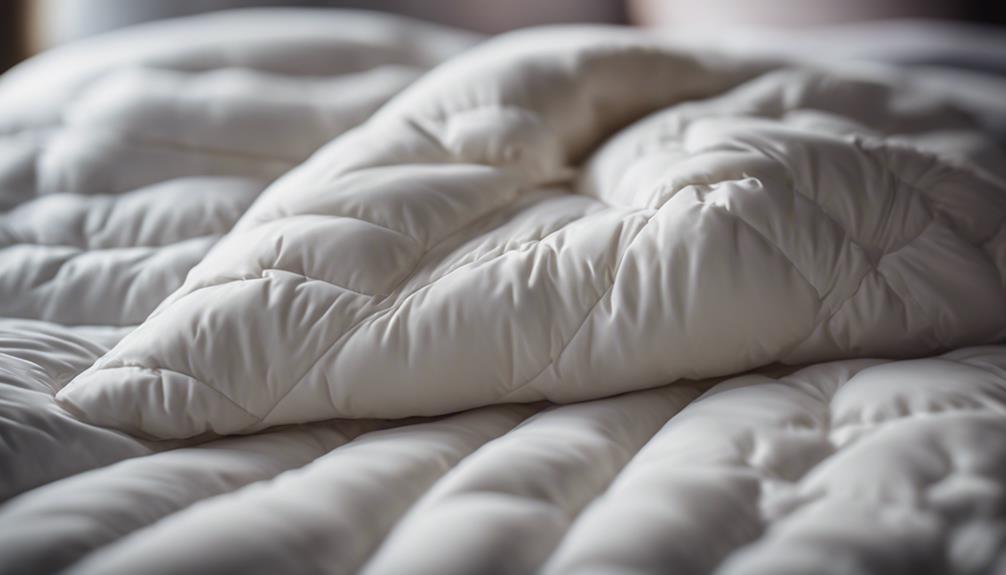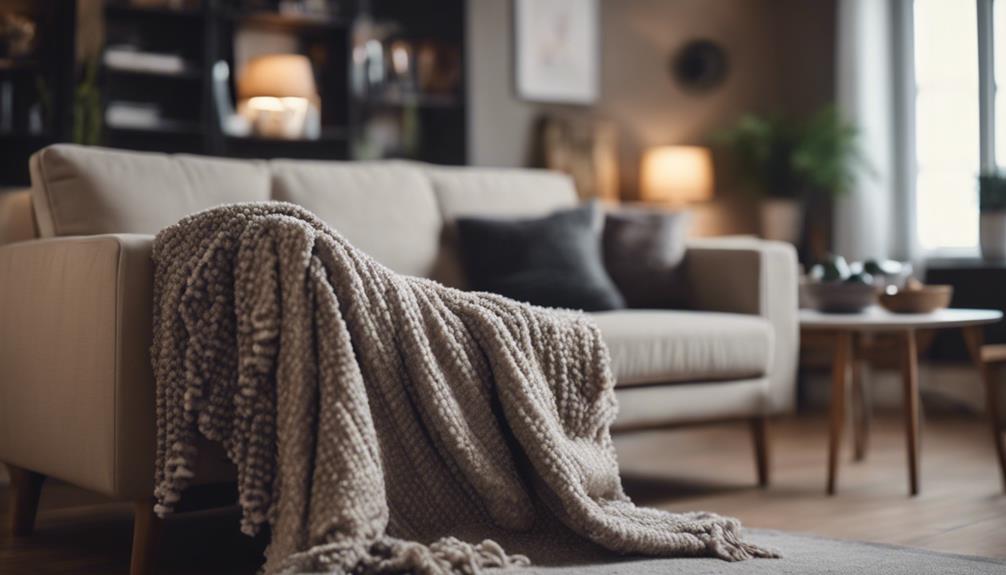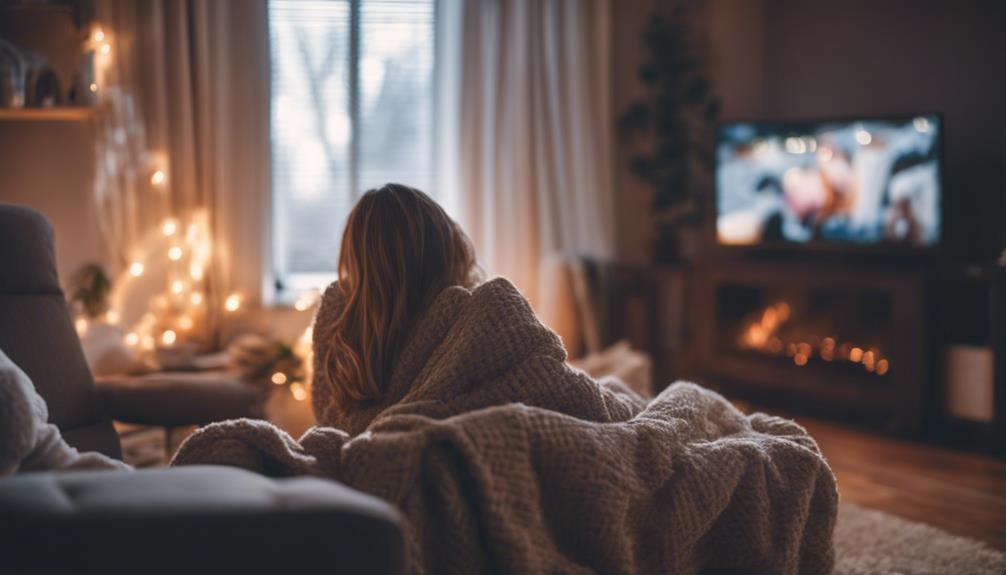Electric throw blankets consume about 190 watts of power, making them efficient for personal heating. They provide direct warmth, which can help save on overall heating expenses. In comparison to electric blankets, they are more energy-efficient. These rugs are a budget-friendly option for staying warm while directing heat towards the user. If you’re interested in learning more about maximizing power usage or other tips for improving efficiency, additional information is available.
Key Takeaways
- Electric throw rugs typically use around 190 watts of power, making them energy-efficient.
- They are a cost-effective choice for staying warm while focusing heat directly on the user.
- Compared to electric blankets, they generally use less power, highlighting efficiency.
- Electric throw rugs provide localized warmth, helping to save money on heating costs.
- By maximizing energy-saving benefits with proper usage, they offer efficient heating solutions.
Electric Throw Rug Power Consumption
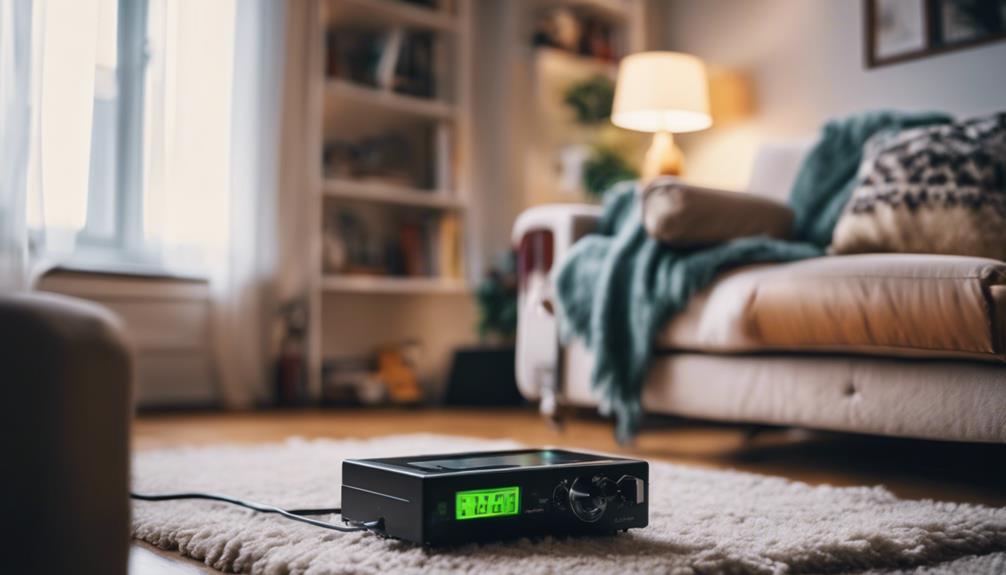
When considering electric throw rug power consumption, it's important to understand the efficiency benefits they offer for personal heating. Electric throw rugs typically use around 190 watts of power, which is relatively low compared to other heating options. This energy-efficient feature makes them a cost-effective choice for staying warm during colder months.
Unlike central heating that warms an entire room, electric blankets focus heat directly on the user, making them more efficient in terms of energy consumption. By using an electric throw rug, you can save money on heating costs while enjoying personalized warmth.
Additionally, incorporating energy-saving habits like wearing layered clothing and utilizing natural sunlight can further enhance the efficiency of electric blankets. Overall, electric throw rugs strike a balance between comfort and energy efficiency, providing a practical solution for staying cozy without using excessive power.
Wattage Comparison With Electric Blankets

When comparing the wattage of electric throw rugs to electric blankets, it becomes evident that electric throw rugs generally use less power.
This difference in power consumption highlights the efficiency of electric throw rugs in providing warmth while being energy-conscious.
Choosing an electric throw rug over an electric blanket can be a smart way to stay cozy without consuming excessive energy.
Electric Rug Efficiency
Comparing the wattage of electric throw rugs to that of electric blankets reveals the efficiency of these heating options. Electric throw rugs typically use around 190 watts of power, making them energy-efficient and cost-effective.
These rugs provide localized warmth, focusing heat directly where it's needed, unlike traditional room heaters that warm entire spaces. By using an electric throw rug, you can save on energy costs as it requires less power to operate.
To enhance efficiency further, consider layering clothes and utilizing natural sunlight in conjunction with the rug. These energy-saving tips can help maximize the benefits of the electric throw rug, making it a practical and efficient choice for staying warm during colder months.
Blanket Vs Rug Power
Electric throw rugs typically consume around 190 watts of power, showcasing their energy efficiency compared to electric blankets. Electric blankets can vary in wattage from 100 to 300 watts, with higher wattage blankets using more power than heated throw rugs.
When looking at power consumption, direct personal heating with a heated throw rug can be a more efficient option than heating an entire room with an electric blanket. Opting for cost-effective heating solutions like heated throw rugs can lead to savings on energy bills compared to running central heating systems.
To enhance efficiency further, consider pre-warming a blanket on a low setting and lowering the thermostat. These practices can maximize the energy-saving benefits of heated throw rugs.
Understanding Electric Throw Rug Efficiency

Electric throw rugs are a practical heating solution, consuming around 190 watts of power.
Direct personal heating with these rugs can be more energy-efficient than heating an entire room.
Power Consumption Comparison
Understanding the efficiency of electric throw rugs with regards to power consumption can be enlightening for those seeking cost-effective heating solutions.
Electric throw rugs typically consume around 190 watts of energy, making them a relatively energy-efficient option for personal heating.
When compared to traditional room heaters, electric throw rugs use minimal power, resulting in lower electricity costs. By using electric throw rugs on lower settings and for shorter amounts of time, energy consumption can be further reduced.
This not only benefits personal energy bills but also helps decrease the overall load on Power Stations.
Utilizing energy-efficient heating options like electric throw rugs can contribute significantly to energy savings and cost-effectiveness in heating solutions.
Energy-Saving Features
Utilizing energy-saving features in electric throw rugs enhances their efficiency and contributes to cost-effective heating solutions. Electric throw rugs typically consume around 190 watts of power, but models with lower wattage options can help improve energy costs.
These rugs are designed to provide personal heating efficiently, focusing warmth where it's needed most. Energy-saving features like auto shut-off functions not only guarantee safety but also help conserve energy and lower your electricity bill.
Pre-warming the throw rug on a low setting before use can also contribute to energy efficiency. By directly heating the individual using the rug, rather than warming up an entire room, electric throw rugs offer a practical and energy-saving heating solution.
Cost-Effective Operation
To maximize cost-effectiveness when operating electric throw rugs, consider implementing energy-saving practices and utilizing their efficient heating capabilities. Heated throw rugs typically use about 190 watts of power, making them more energy-efficient than many other heating options.
Direct personal heating with an electric blanket can be more efficient and cost-effective than heating an entire room. Using the electric throw rug on a low setting and pre-warming it can help save energy and reduce electricity costs.
Energy-saving tips such as layering clothes, using sunlight, and draught-proofing can complement the efficient operation of electric throw rugs. Using an electric throw rug is a cost-effective way to stay warm while minimizing energy consumption compared to traditional heaters.
Factors Affecting Power Usage

Factors that impact power usage of electric throw rugs include the duration of use, the settings chosen, and the size of the rug. When considering the duration of use, running the heated throw rug for longer periods will naturally consume more electricity. Selecting higher heat settings will also increase power consumption compared to lower settings. Additionally, the size of the rug matters; larger rugs will generally require more power to heat up adequately. To illustrate the power consumption variance based on settings, here is a comparison table showcasing the estimated energy usage of a typical electric throw rug set at different heat levels:
| Heat Setting | Power Consumption (watts) |
|---|---|
| Low | 100 |
| Medium | 150 |
| High | 190 |
Benefits of Energy-Efficient Settings
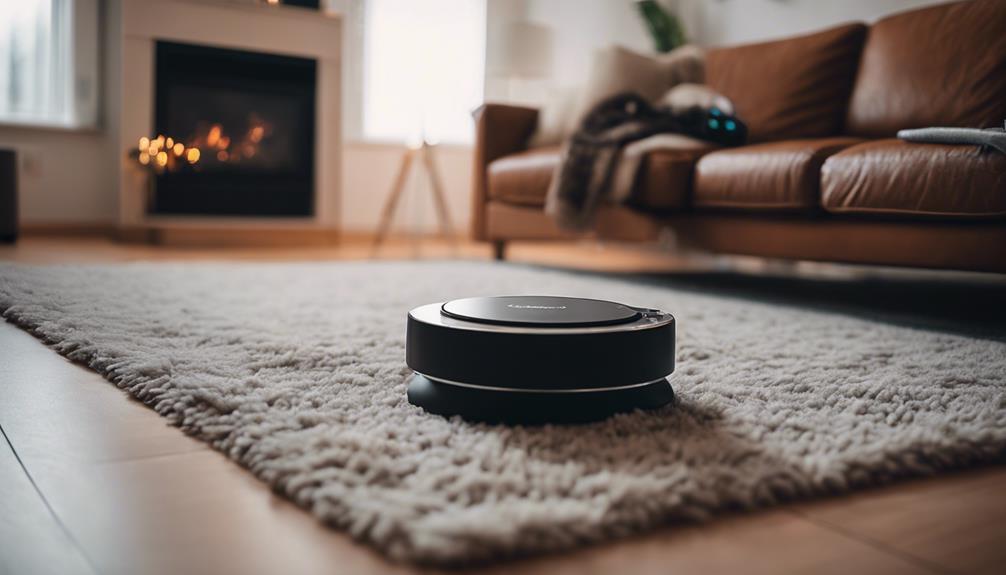
Warming electric throw rugs with energy-efficient settings can greatly reduce power consumption. By utilizing lower heat settings, these rugs can help save energy and lower electricity costs. The energy-efficient settings not only contribute to reducing power consumption but also aid in maintaining a comfortable warmth without excessive electricity usage. Pre-warming the electric throw rug on a low setting can be an efficient way to conserve energy while still enjoying the benefits of a warm rug.
Opting for energy-efficient settings isn't only beneficial for your wallet but also for the environment. It provides a sustainable heating solution that's cost-effective in the long run. By choosing to use energy-efficient settings on your electric throw rug, you're making a conscious effort to reduce your carbon footprint and contribute to a greener future. This simple adjustment can go a long way in promoting energy efficiency and sustainable living practices.
Maximizing Energy Savings With Auto Shut-Off

Maximizing energy savings with auto shut-off features on electric throw rugs is a practical way to prevent unnecessary power consumption and enhance safety. Electric blankets equipped with auto shut-off mechanisms guarantee that the heating function stops after a predetermined period, effectively saving energy. This feature not only promotes energy efficiency but also plays an essential role in preventing potential safety hazards, especially if users forget to manually turn off the blanket.
In today's market, modern electric throw rugs are designed with advanced smart technology that optimizes energy usage. The auto shut-off feature can be conveniently programmed to activate after a specific duration, offering users a seamless way to save energy and reduce electricity costs. By utilizing this function, individuals can enjoy the warmth of their electric blanket without the worry of excessive energy consumption or safety risks. Embracing auto shut-off capabilities on electric throw rugs is a simple yet effective strategy for maximizing energy efficiency and promoting a safe heating experience.
Tips for Lowering Electric Throw Rug Power Consumption
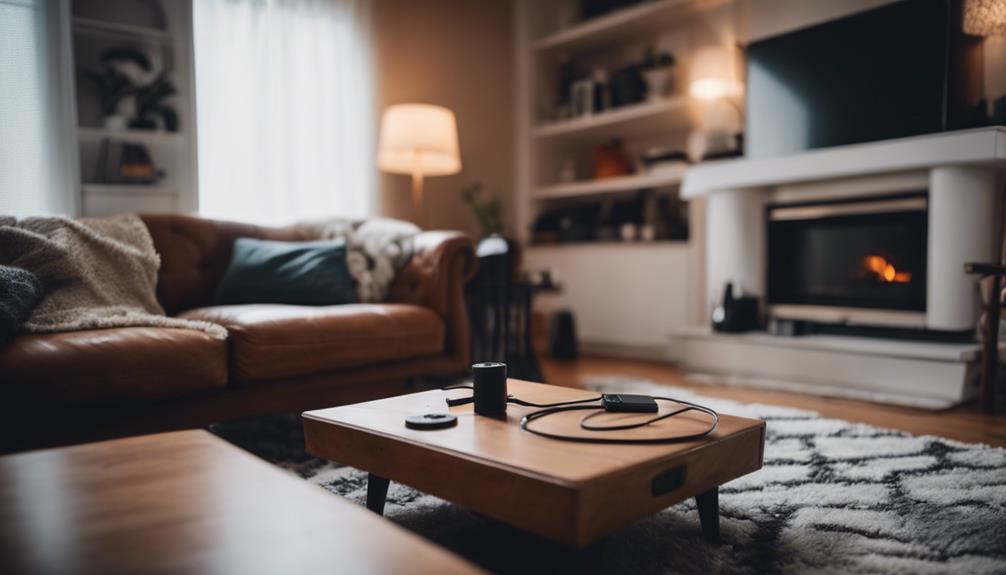
To lower the power consumption of electric throw rugs, one effective strategy is to pre-warm the blanket on a low setting before use. This method allows the blanket to reach a comfortable temperature more efficiently, reducing the overall energy required to maintain warmth.
Additionally, direct personal heating with a heated throw rug can be more energy-efficient than heating an entire room, focusing the warmth where it's needed most.
Implementing energy-saving practices such as layering clothes, utilizing sunlight for natural warmth, and draught-proofing windows and doors can further decrease power usage while maximizing the efficiency of your electric blanket.
Embracing the principles of the Green It Yourself movement, which promotes energy efficiency through DIY projects like effectively using heated throw rugs, can also contribute to a more sustainable and cost-effective approach to staying warm during colder months.
Frequently Asked Questions
Does the Electric Blanket Use a Lot of Electricity?
Electric throw rugs typically use around 190 watts of power, which is relatively low compared to other heating options.
Direct personal heating from a heated throw rug can be more energy-efficient than heating an entire room.
Using an electric heated throw rug can be a cost-effective way to stay warm without consuming excessive electricity.
Energy-saving tips like layering clothes and draught-proofing can complement the efficiency of electric throw rugs.
Do Electric Throw Rugs Use Much Electricity?
Electric throw rugs are energy-efficient heating options, typically using around 190 watts of power. They offer direct personal warmth, which can be more efficient than heating an entire room.
Are Electric Throws Expensive to Run?
Electric throw rugs are efficient heaters compared to traditional methods. They use around 190 watts, costing only 5-6 cents per hour. This targeted heating is more energy-efficient than warming an entire room.
Pre-warming on a low setting can further save energy. Combining this with tips like layering clothes and draught-proofing enhances cost-effective heating.
Do Electric Blankets Increase the Electric Bill?
Electric blankets can impact the electric bill based on usage. Managing costs efficiently involves using lower settings and turning them off when not needed.
Daily usage cost is calculated by multiplying wattage by daily hours and the electricity rate. Higher settings in winter can potentially use around 150-200 watts.
Monitoring usage and employing energy-saving strategies can help control the impact on the electric bill.
How Much Power Do Electric Throw Rugs Typically Use?
Electric throw rugs cost efficiency can vary depending on the size and wattage of the rug. Typically, electric throw rugs consume around 200 watts of power, making them an energy-efficient option for staying warm during the winter months. Be sure to check the product specifications for exact power usage.
Conclusion
To sum up, it's crucial to be mindful of the power consumption of electric throw rugs to save energy and lower electricity bills.
By understanding efficiency factors and utilizing energy-saving settings, you can maximize the benefits of these cozy additions to your home.
Remember, a little awareness goes a long way in keeping your space warm and comfortable without breaking the bank.

